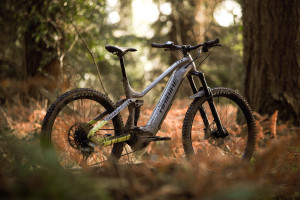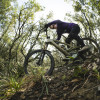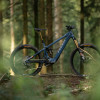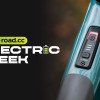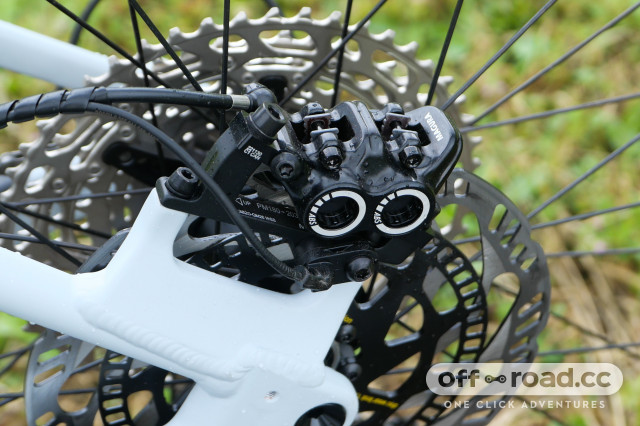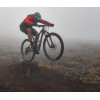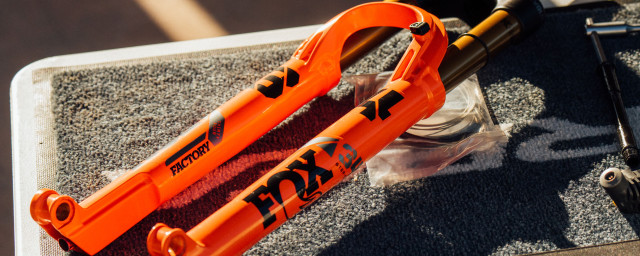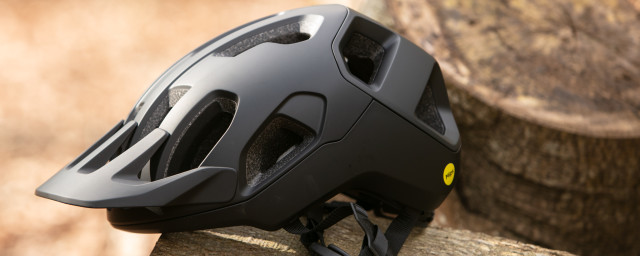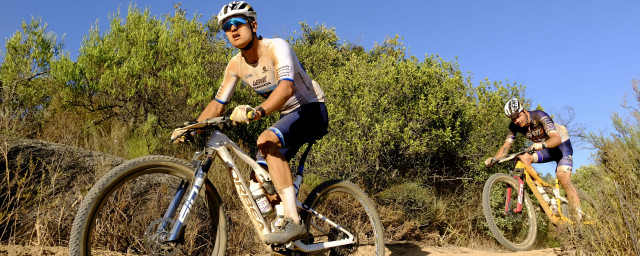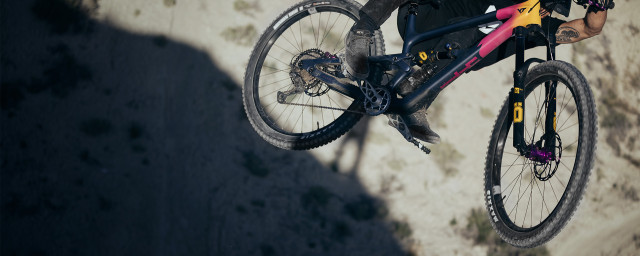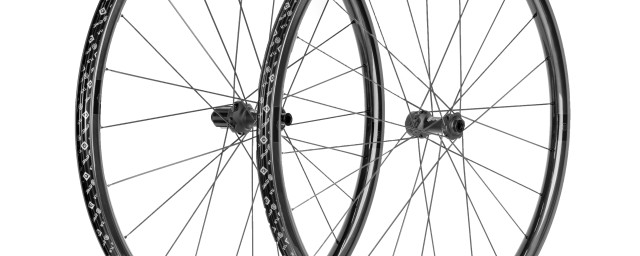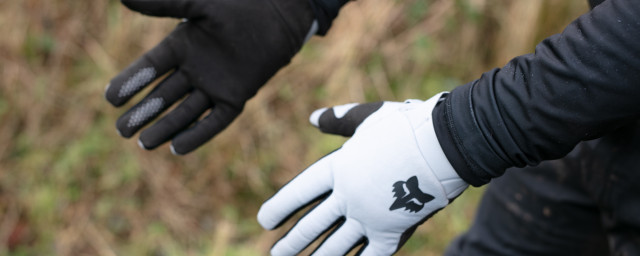e-Bike innovations - how e-MTB has driven the plug-in revolution
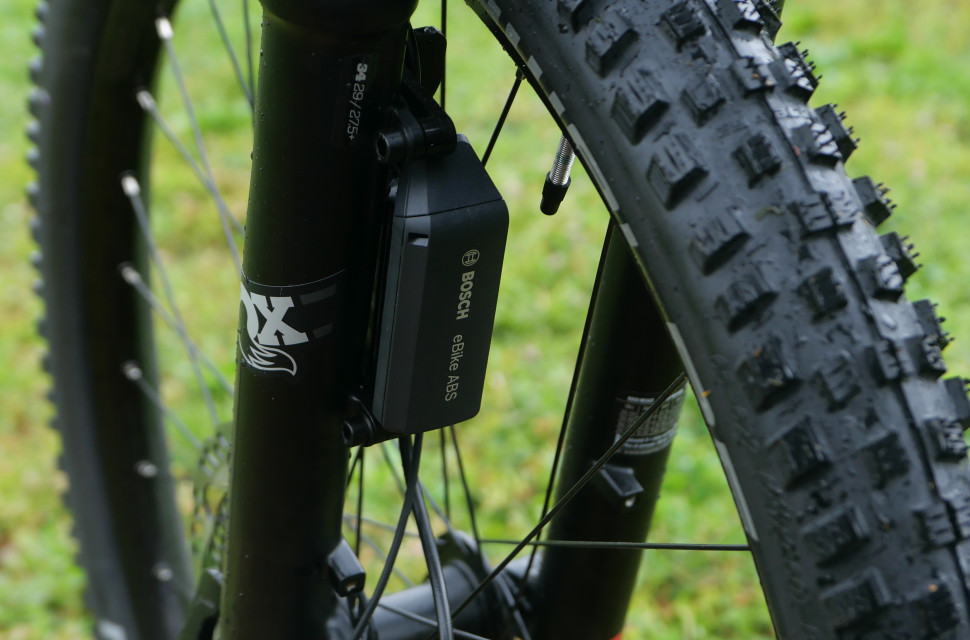
E-bikes have revolutionised the mountain bike market and influenced gravel bikers. The available pedal assistance has enabled riders to pedal bikes with better tyres, more trick suspension, and more travel up steep climbs. They also benefit from all those heavy-duty components on the descent.
- How much do e-bikes cost to maintain long-term?
- Welcome to Electric Week - a celebration of the e-MTB
- Winter mountain biking - your guide to riding in the cold
Although many think of e-bikes merely as a solution for riders who have developed a legacy injury or are struggling with fitness due to a demanding lifestyle, there’s much more to e-bikes. For riders of ability and moderate fitness, they enable a much more capable bike with more trail-taming features and advanced componentry for descents.
Fitting large-diameter stanchion forks, coil shocks, and reinforced casing tyres implies a significant weight penalty. It’s just fatiguing to pedal a 17kg enduro bike up a long climb for that epic 10-minute descent. But with an e-bike, you can have all the bits that make descending so rewarding, without the fatigue penalty of having to power that additional component mass up a steep climb only on human power.
Designs and product planners have been freed from the ‘gram gods’ with e-bikes, allowing them to add potentially valuable features to enrich the dynamic riding experience.
Normalising advanced brakes
E-bikes are have heavier spung and unsprung mass. That means the bikes are heavier and usually roll much heavier wheels and tyres for enhanced durability in technical, rocky terrain. All that bike and rotating mass mean a lot of pressure on braking systems – which is why e-bikes are helping to evolve next-generation trail and enduro bike brakes.
From upsized rotors, better four-piston brakes, pad materials, and different rotor compositions, e-bikes are helping to normalize bigger, better brakes for the entire mountain bike market.
Broadly, the stopping power that heavy trail and enduro e-bikes require, is similar to that of conventional downhill racing bikes. However because downhill bikes are such a niche market, manufacturers have limited consumer scale to invest in new products. E-bikes are a much larger market of riders, with severe brake technology demands, creating a real case for brake manufacturers and component suppliers to invest in newer technologies and production capacities.
What is the future regarding anti-lock braking, a crucial safety feature in commercial transport and personal vehicles? On wet roads, an ABS can dramatically reduce emergency stopping distances, helping to prevent collisions.
But why don’t mountain bikes have ABS? That’s a good question because mountain bikes have such powerful brakes, ABS must be a benefit to prevent lock-up. An issue is power – not actual lever-to-caliper-to-rotor power, but rather system power. ABS systems need sensors to calculate a pending traction loss and moment of lock-up, before a pulse-pump pressure system micro-modulates the brake, avoiding lock-up.
The hydraulic pulse system needs external power to have a response and durable ABS solution. On a conventional mountain bike, that’s a problem, but an e-bike has the installed battery capacity to power ABS braking systems with a lot more sensitive functionality.
More extreme suspension
Bigger suspension just works better. Whether it’s larger stanchion forks or shocks with more oil capacity, valving, or coil springs, having ‘more’ matters, especially if you are dropping into a long, steep, and technically challenging descent.
E-bikes make it possible for riders who operate trail and enduro mountain bikes with much more suspension travel than would otherwise be possible. Without creating an awful pedalling experience or triggering terrible fatigue halfway through a ride.
Shock design is an excellent example of how enabling e-bikes can be. Creating the best possible descending experience by not having to bother with climbing efficiency.
Anti-squat values and pedal-force-induced suspension bob, robbing rider energy on climbs, isn’t an issue with e-bikes because the mid-drive motor and battery power compensate for those efficiency losses. This has enabled e-bike category managers and product planners in the 140-170mm market to fit shocks to e-bikes dedicated to descending.
Conventional mountain bike shock design is a compromise. The shock must create a stable pedalling platform when climbing, then become a perfect terrain absorption suspension component when the adjustment dial is turned from ‘climb’ to ‘open’. With an e-bike, the climbing function is irrelevant; everything is about the ability to descend. That’s why many e-bikes feature coil shocks, offering the best terrain taming, durability, and fade-free suspension action on those ultra-long Alpine descents.
Active suspension
The installed power and control software architecture on most e-bikes has also opened the potential for truly active suspension. Although mountain bike suspension engineers have experimented with data logging and active valving for a long time, the issue of size, weight, power, and packaging always create constraints.
With e-bikes, the weight and power issues of active suspension data logging modules and auto adjusters are negated. E-bikes have the installed power to drive sophisticated data logging software and sensors, and also the valving adjustment that is a feature of truly active suspension systems.
There is an argument that most longer-travel e-bikes don’t need active suspension. Why? Because the pedal-bop during climbing is offset by the sheer amount of additional pedal assistance wattage provided by the mid-drive motor. But the truth is that if pro downhill mountain bike racers who never climb see a value in adjustable suspension systems for challenging descents, they could find a happy home on e-bikes – where there’s all the battery power and electrical architecture in place to support their functionality.
Integrated lighting
Nobody ever needs more cable clutter on a handlebar. But if you are an endurance mountain biker or gravel adventure rider, lighting is essential.
Endurance off-road cyclists often ride at dawn and dusk, where bike lighting is a crucial safety feature. Both for riders needing to navigate the terrain immediately ahead of their front wheel, and to alert other road users of their presence.
Aftermarket lights might be good, but remembering to change them is annoying. And running all those cables and clamps can create a messy handlebar. Especially if your touring mountain bike or gravel bike is crowded with many frame and handlebar bags. The solution is integrated lighting.
No cables. No recharging bother. Just great lighting, fully integrated with the bike. It’s something that e-bike have enabled because they already have the electrical architecture and onboard battery capacity to support powerful lighting. From e-bikes in the trail riding application to e-gravel bikes destined for those terrific weeklong adventure rides, integrated lighting is one of the big wins that e-bikes have created.
